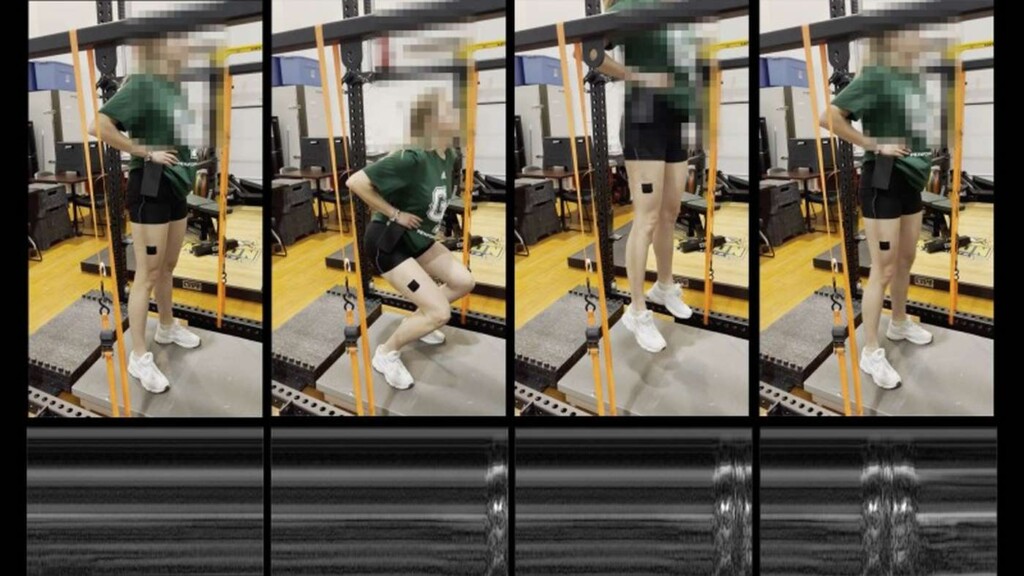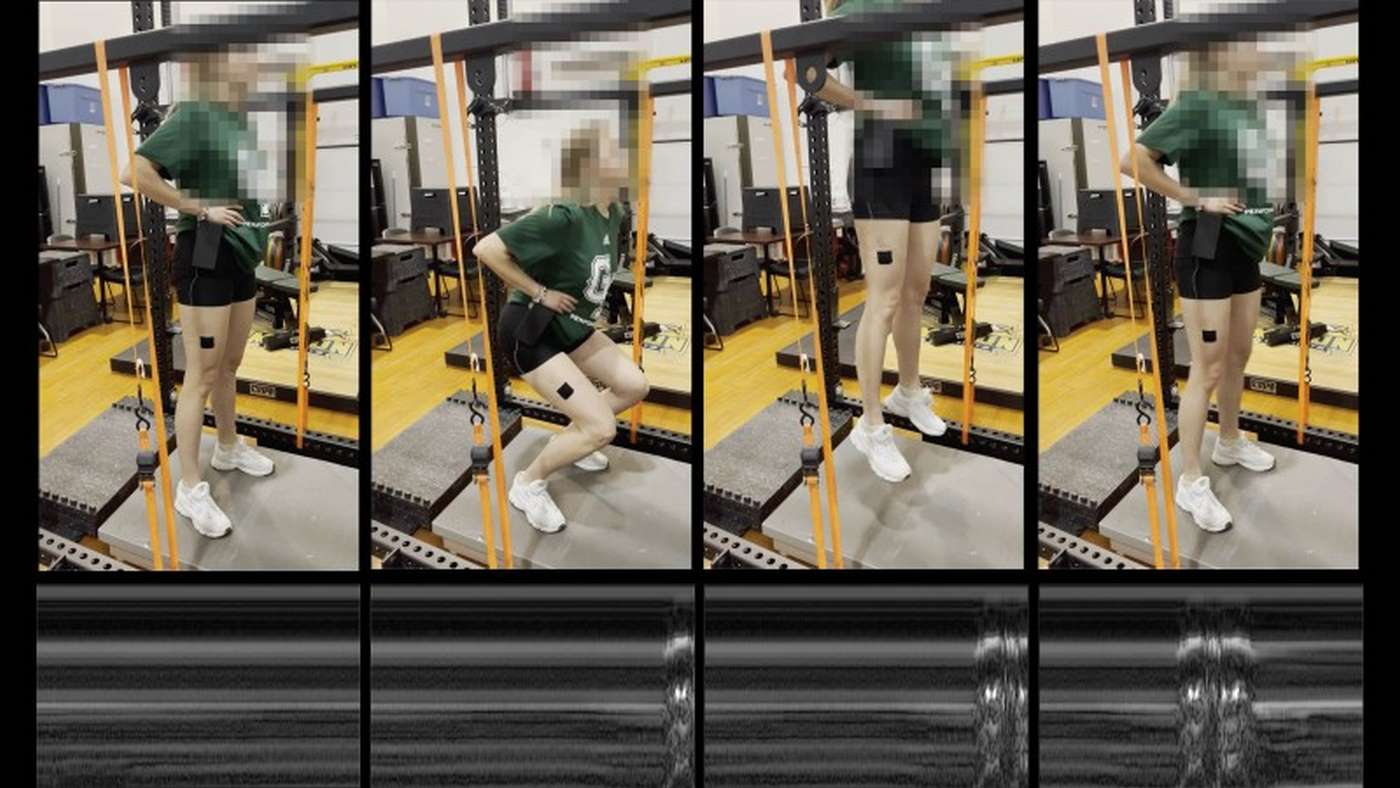
A George Mason University bioengineer has developed a wearable ultrasound system that can detect immediately if that twinge or tweak in your back or shoulder that you got in physical rehab is a muscular or skeletal injury or not.
It does so by using ultrasonic monitoring through a skin patch, and could provide real-time information on muscle tissues during a workout.
Millions of people suffer from musculoskeletal injuries every year, and the recovery process can often be long and difficult.
During the following slow rehabilitation, medical professionals routinely evaluate a patient’s progress via a series of tasks and exercises. However, because of the dynamic nature of these exercises, obtaining a clear picture of real-time muscle function is extremely challenging.
Then there’s the period after rehab—which is sometimes even more difficult—where the recovered doesn’t feel any discomfort or pain but is still hesitant to trust the same movements that triggered their injury in the first place.
Parag Chitnis of George Mason University led a team that developed this new wearable ultrasound system that can produce clinically relevant information about muscle function during dynamic physical activity.
Many medical technologies can give doctors a window into the inner workings of a patient’s body, but few can be used while that patient is moving. Parag’s monitor can move with the patient and provide an unprecedented level of insight into body dynamics.
“For instance, when an individual is performing a specific exercise for rehabilitation, our devices can be used to ensure that the target muscle is actually being activated and used correctly,” said Chitnis.
“Other applications include providing athletes with insights into their physical fitness and performance, assessing and guiding recovery of motor function in stroke patients, and assessing balance and stability in elderly populations during routine everyday tasks.”
OTHER INNOVATIVE WEARABLES: ‘Wearable Muscles’ Restore Mobility in Those Who Have Trouble Moving Their Arms
Designing a wearable ultrasound device took much more than simply strapping an existing ultrasound monitor to a patient. Chitnis and his team reinvented ultrasound technology nearly from scratch to produce the results they needed.
“Traditionally, ultrasound systems transmit short-duration pulses, and the echo signals are used to make clinically useful images,” said Chitnis. “Our systems use a patented approach that relies on transmission of long-duration chirps, which allows us to perform ultrasound sensing using the same components one might find in their car radio.”
MORE NEWS LIKE THIS: Regenerative Medicine Breakthrough: Cellular ‘Glue’ Heals Wounds, Potentially Regrows Nerves and Tissue
This modified approach allowed the team to design a simpler, cheaper system that could be miniaturized and powered by batteries. This let them design an ultrasound monitor with a small, portable form factor that could be attached to a patient.
Soon, Chitnis hopes to further improve his device and develop software tools to more quickly interpret and analyze ultrasound signals.
He will present his work at the Acoustics 2023 event running this week at the International Convention Centre Sydney.
SHARE This Really Brilliant Idea For Muscle Injury Rehab On Social Media…




















